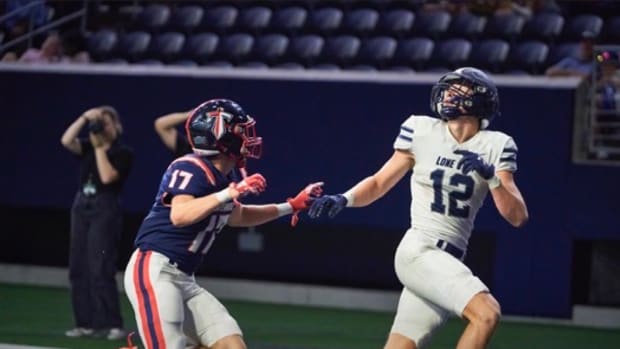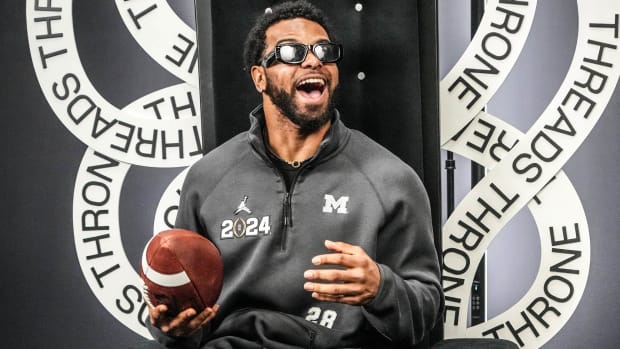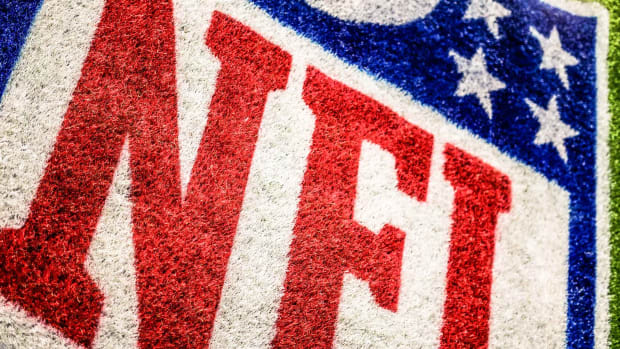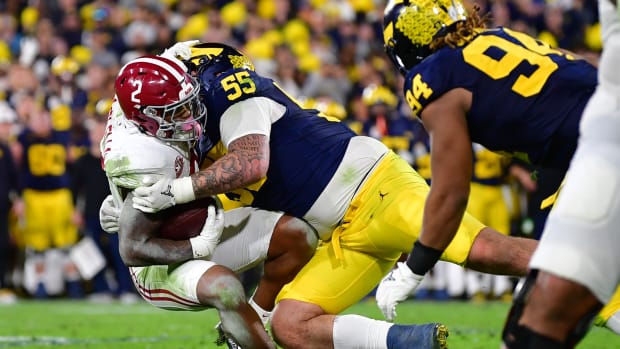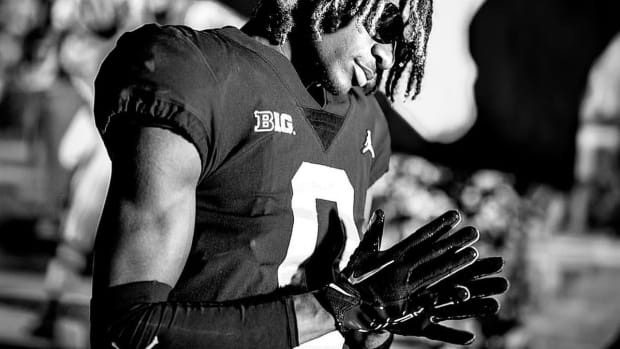The Team Michigan Needed To Be To Beat Ohio State Has Emerged
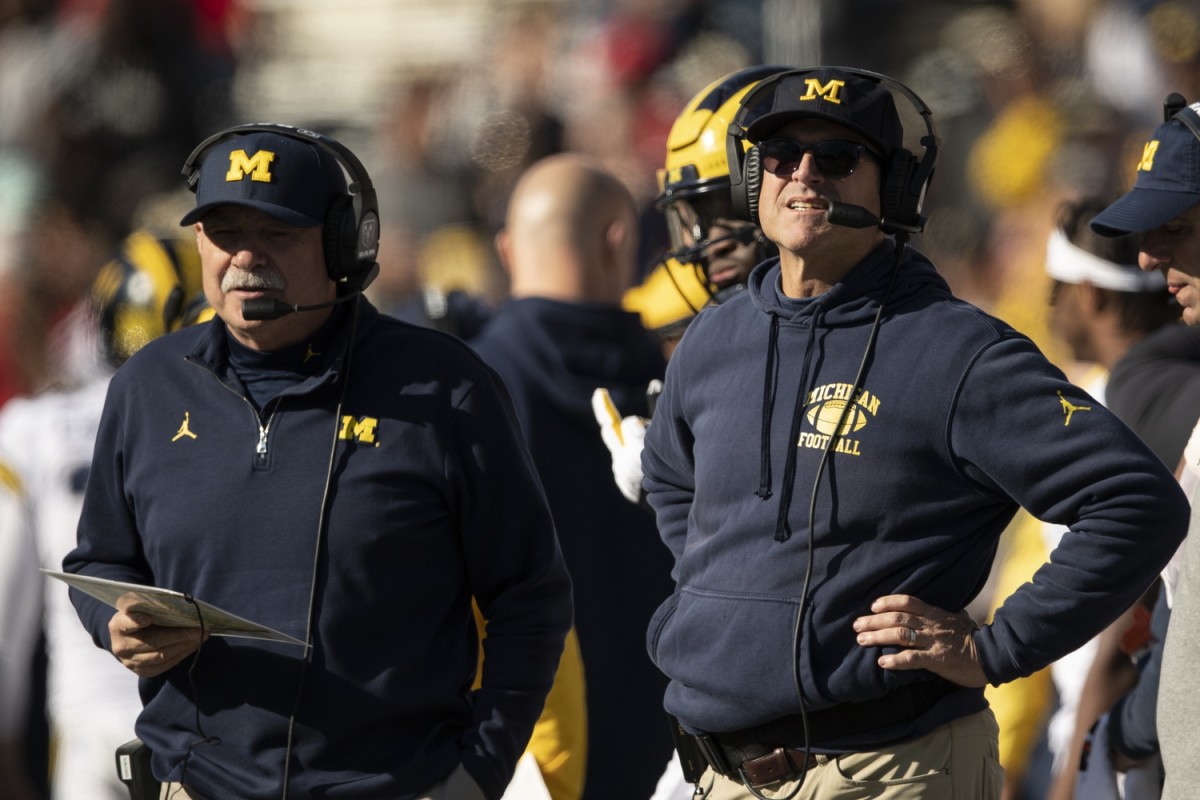
Go back to Nov. 24, 2018, a day in which Michigan suffered a historic loss to Ohio State, giving up 62 points to the Buckeyes.
In the aftermath of the defeat, amid the despair, second-guessing and criticism of Jim Harbaugh and his staff, there was a question - what had to happen for the Wolverines to beat Ohio State at any point in the near future?
Fast-forward a week, to an unexpected announcement as arguably one of the three greatest coaches in college football history, OSU's Urban Meyer, says he's done, and that the Scarlet and Gray will turn to a first-time head coach, Ryan Day.
Day is proving his coaching chops, leading Ohio State to a Big Ten East division title already and a No. 2 ranking that has the Buckeyes among the favorites to win the national championship, but he's not Meyer. Not yet. Harbaugh has 15 years head-coaching experience on him.
On paper, the coaching matchup finally favors Michigan.
So back to the original question - what had to happen for Michigan? The Maize and Blue had to modernize their offense, dropping the notion that the Stanford bully ball Harbaugh ran from 2007-10 would cut it in today's college football.
They needed to bring in a young, forward-thinking coordinator that would utilize U-M's incredible talent at the receiver position, and would allow Shea Patterson to be a more polished version of the quarterback he was at Ole Miss.
Defensively, Michigan needed more speed in the secondary, a more reliable pass rush, but most of all, U-M needed to adapt its coverages, using more zone to prevent opposing offenses from taking advantage of the Wolverines with a constant array of man-beaters (crossing routes, slants, pick plays, screens, QB draws, etc.)
In a shrewd move, Harbaugh hired Josh Gattis away from Alabama, giving him full autonomy over the offense to remake it into a 2019 mold. Defensive coordinator Don Brown, meanwhile, took a good long look at his unit and adapted too, installing more zone concepts this year. It has also helped that U-M signed five-star safety Daxton Hill, who has shown elite speed to cover slot receivers.
Ok, now let's skip ahead to August. Ohio State got a boost when five-star QB Justin Fields was granted immediate eligibility by the NCAA, but in the preseason, before either team had revealed any warts, the conversation was positive: if Michigan's offense fully embraces and can execute speed in space, if the offensive line is as good as predicted, if the defense matures, develops playmakers and is peaking at the right time, and there are no holes on special teams, U-M can beat OSU, especially playing the game at home.
Three contests into the season, at Wisconsin, none of that was happening, and fans were left hoping the Buckeyes wouldn't put up 63 on the Maize and Blue this year.
But over the last eight games, and really the last four, Michigan has become the team we all thought it was capable of becoming back in August.
The Wolverines now feature a dynamic passing attack that made a pair of Top 50 pass-defense units (MSU is 50th and IU is 25th, and that's after giving up big numbers to U-M) look feeble.
Patterson is in the best groove of his career, putting up back-to-back better than 200.0 passer ratings for just the second time in his four seasons (and first since South Alabama and Tennessee-Martin in 2017).
Junior receivers Nico Collins and Donovan Peoples-Jones and sophomore Ronnie Bell have been making big play after play. The offensive line is pass-protecting at a level needed to counter the Buckeyes' fearsome rush (though defensive end Chase Young will be their greatest challenge) and the running game, while falling off the past two weeks by design, is a strong compliment to the aerial attack.
Defensively, U-M is probably still better in man but has evolved into a capable zone defense when called upon (which is more frequent to confuse QBs). Hill, junior cornerback Ambry Thomas, redshirt sophomore safety Brad Hawkins, senior CB Lavert Hill and senior safety Josh Metellus give Michigan one of the top-two secondaries in the Big Ten (OSU the other) and probably one of the 10 best in college football.
The front seven is full of difference-makers, its 35 sacks 12th best in college football, with sophomore end Aidan Hutchinson, junior end Kwity Paye and senior rush linebacker Josh Uche providing more consistent threats than U-M had at the same time a year ago going into THE Game (those three combined have 19.5 QB takedowns). Redshirt freshman middle linebacker Cam McGrone and Hill offer an element of speed that prevents offenses from outrunning the Wolverines.
On special teams, redshirt junior Quinn Nordin has re-emerged as a reliable field-goal kicker, U-M's coverage teams have been very good, its own return game benefits from freshman phenom Giles Jackson (21st nationally averaging 26.1 yards per kickoff return) and senior Will Hart, as tough of a day as he had yesterday averaging 31.2 yards per punt, has a season average of 44.8.
As good as Ohio State has been this year - winning 11 games by an average of 38.9 points per victory (28.0 in three wins over ranked opponents) - if this Michigan team had shown up in all 11 games in 2019, what would your confidence level be heading into THE Game? Probably not 100 percent but you'd be giving U-M a 50-50 chance (or better).
The fact is this Michigan team didn't appear in all 11 contests, but it has appeared in the last four, and what matters is right now.
Early lines from Vegas have Ohio State as an 11-point favorite. Michigan won't be expected to win, even by the majority of its own fans, but go back … go back to August when you thought it was possible for the Wolverines to end their losing streak to the Buckeyes if this and this and this happened, and ask yourself, hasn't all of it happened?

